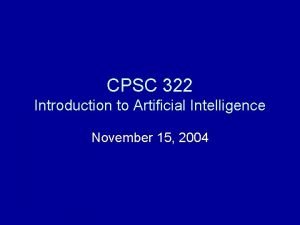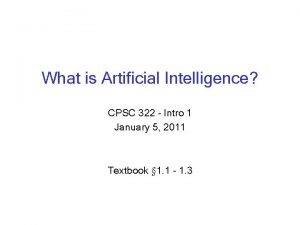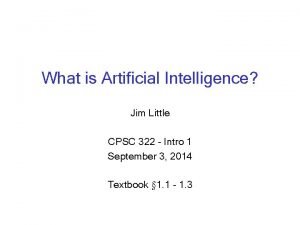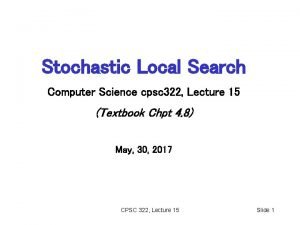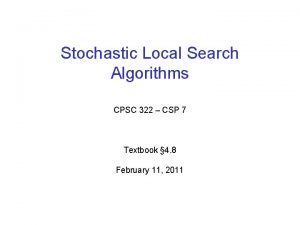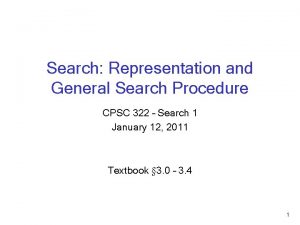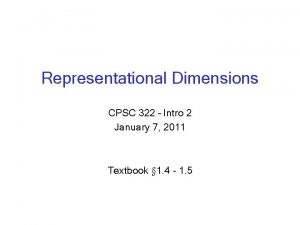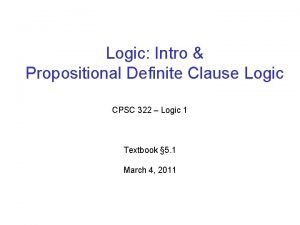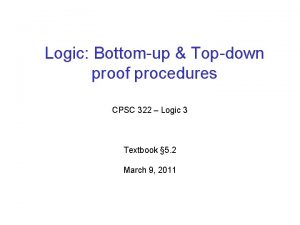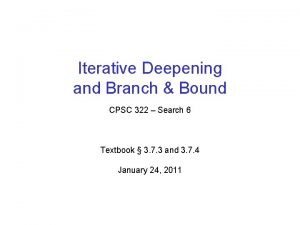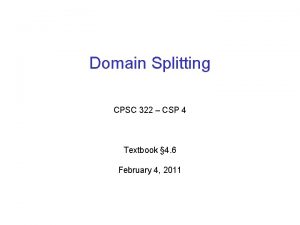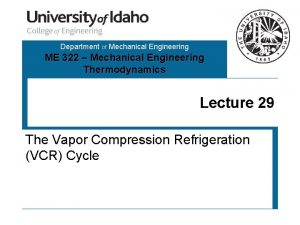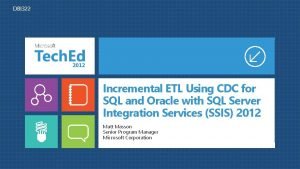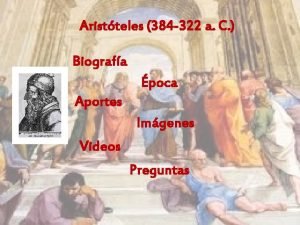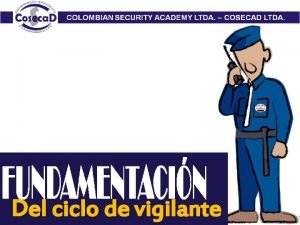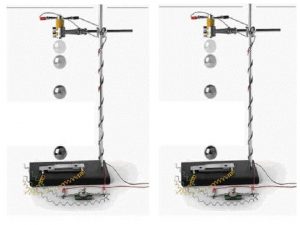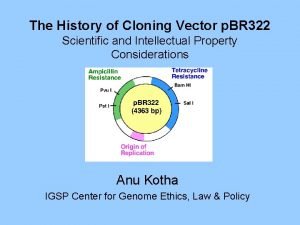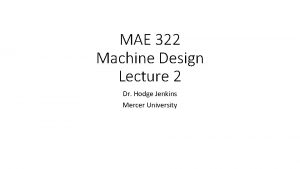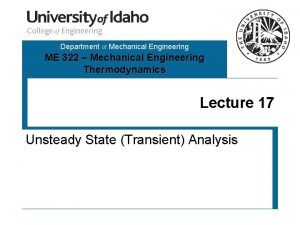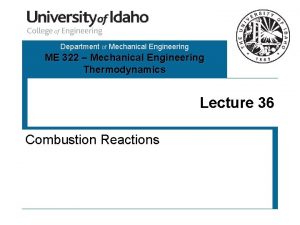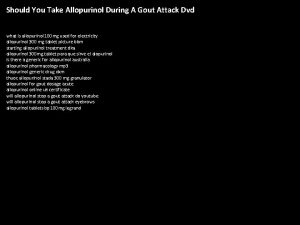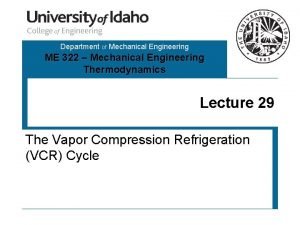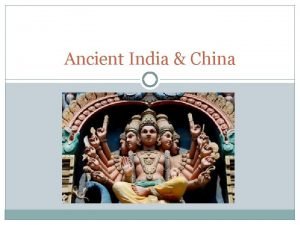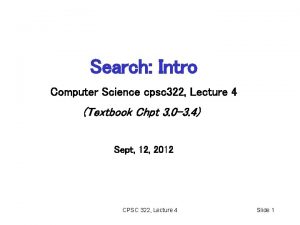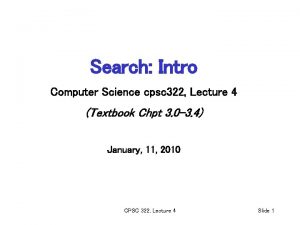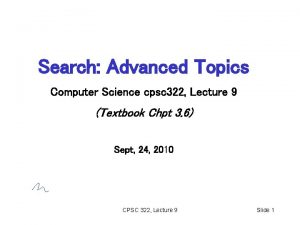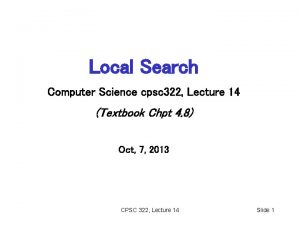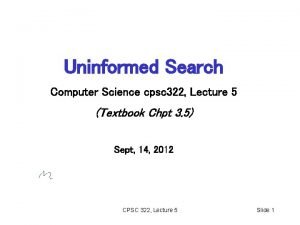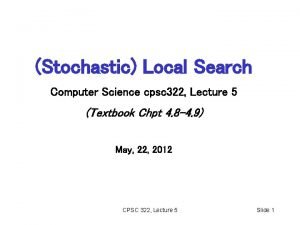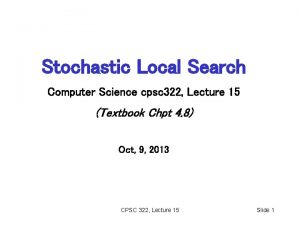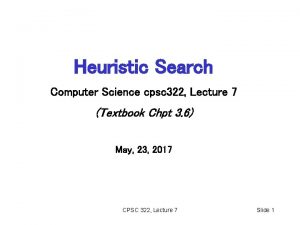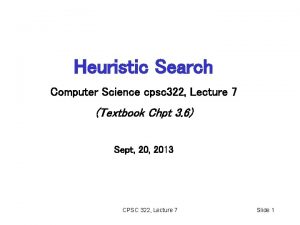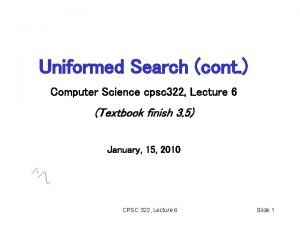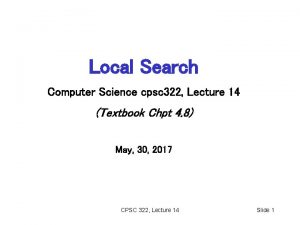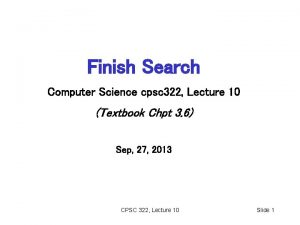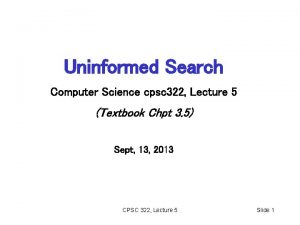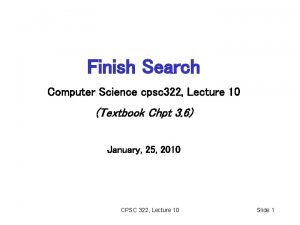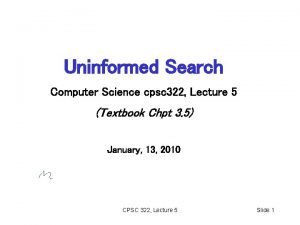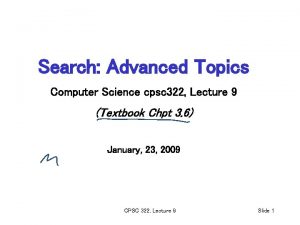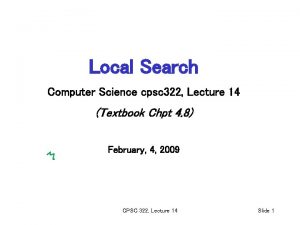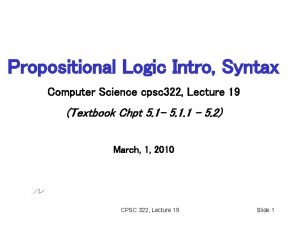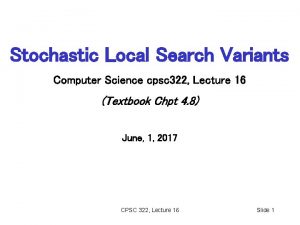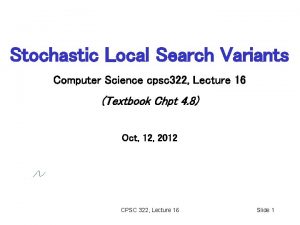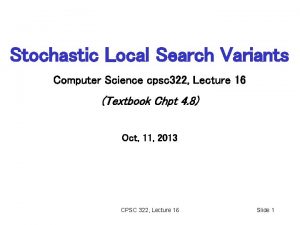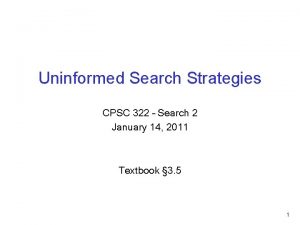Search Intro Computer Science cpsc 322 Lecture 4































- Slides: 31

Search: Intro Computer Science cpsc 322, Lecture 4 (Textbook Chpt 3. 0 -3. 4) May 18, 2017 CPSC 322, Lecture 4 Slide 1

Announcements • Still looking for rooms for some TAs office hours (stay tuned) • Straw Poll for break length A 15 min B 20 min C 25 min • Assignment 1 will be out by Tue (on Search) CPSC 322, Lecture 4 Slide 2

Instructor People • Giuseppe Carenini ( carenini@cs. ubc. ca; office CICSR 105) Teaching Assistants Dylan Dong wdong@cs. ubc. ca [only marking] Johnson, David davewj@cs. ubc. ca Office hour: ICCS TBD, Wed 1 -230 pm Johnson, Jordon jordon@cs. ubc. ca Office hour: ICCS TBD, Mon 11 -1 pm CPSC 322, Lecture 1 Slide 3

TAs (cont’) Kazemi, Seyed Mehran smkazemi@cs. ubc. ca Office hour: ICCS TBD, Wed 230 -4 pm Rahman, MD Abed abed 90@cs. ubc. ca Office hour: ICCS X 141, Fri 3 -430 pm Wang, Wenyi wenyi. wang@alumni. ubc. ca Office hour: TBD, mon 1 -230 pm CPSC 322, Lecture 1 Slide 4

Modules we'll cover in this course: R&Rsys Environment Problem Static Deterministic Stochastic Arc Consistency Constraint Vars + Satisfaction Constraints Search Belief Nets Query Logics Search Sequential Planning Representation Reasoning Technique STRIPS Search Var. Elimination Decision Nets Var. Elimination Markov Processes Value Iteration CPSC 322, Lecture 2 Slide 5

Lecture Overview • Simple Agent and Examples • Search Space Graph • Search Procedure CPSC 322, Lecture 4 Slide 6

Simple Planning Agent Deterministic, goal-driven agent • Agent is in a start state • Agent is given a goal (subset of possible states) • Environment changes only when the agent acts • Agent perfectly knows: • what actions can be applied in any given state • the state it is going to end up in when an action is applied in a given state • The sequence of actions and their appropriate ordering is the solution CPSC 322, Lecture 4 Slide 7

Three examples 1. A delivery robot planning the route it will take in a bldg. to get from one room to another 2. Solving an 8 -puzzle 3. Vacuum cleaner world CPSC 322, Lecture 4 Slide 8

Example 1: Delivery Robot CPSC 322, Lecture 4 Slide 9

Eight Puzzle States: each state specifies which number/blank occupies each of the 9 tiles HOW MANY STATES ? 9 9 99 9! 8 2 Actions: blank moves left, right, up down Possible Goal: configuration with numbers in right sequence

Example 2: 8 -Puzzle? Possible start state CPSC 322, Lecture 4 Goal state Slide 11

Example: vacuum world States • Two rooms: r 1, r 2 • Each room can be either dirty or not • Vacuuming agent can be in either in r 1 or r 2 Possible start state CPSC 322, Lecture 4 Possible goal state Slide 12

Example: vacuum world Possible start state Goal state CPSC 322, Lecture 6 Slide 13

…. . Suppose we have the same problem with k rooms. The number of states is…. k 3 k * 2 k 2 * kk

…. . Suppose we have the same problem with k rooms. The number of states is…. k * 2 k

Lecture Overview • Simple Agent and Examples • Search Space Graph • Search CPSC 322, Lecture 4 Slide 16

How can we find a solution? • How can we find a sequence of actions and their appropriate ordering that lead to the goal? • Define underlying search space graph where nodes are states and edges are actions. b 4 o 113 r 113 o 107 o 109 o 111 r 107 r 109 r 111 CPSC 322, Lecture 4 Slide 17

Search space for 8 puzzle CPSC 322, Lecture 4 Slide 18

Vacuum world: Search space graph states? Where it is dirty and robot location actions? Left, Right, Suck Possible goal test? no dirt at all locations CPSC 322, Lecture 6 Slide 19

Lecture Overview • Simple Agent and Examples • State Space Graph • Search Procedure CPSC 322, Lecture 4 Slide 20

Search: Abstract Definition How to search • Start at the start state • Consider the effect of taking different actions starting from states that have been encountered in the search so far • Stop when a goal state is encountered To make this more formal, we'll need review the formal definition of a graph. . . CPSC 322, Lecture 4 Slide 21

Search Graph A graph consists of a set N of nodes and a set A of ordered pairs of nodes, called arcs. Node n 2 is a neighbor of n 1 if there is an arc from n 1 to n 2. That is, if n 1, n 2 A. A path is a sequence of nodes n 0, n 1, n 2 , . . , nk such that ni-1, ni A. A cycle is a non-empty path such that the start node is the same as the end node A directed acyclic graph (DAG) is a graph with no cycles Given a start node and goal nodes, a solution is a path from a start node to a goal node. CPSC 322, Lecture 4 Slide 22

Examples for graph formal def. a b f c g h e d i CPSC 322, Lecture 4 j k l n Slide 23

Examples of solution • Start state b 4, goal r 113 • Solution <b 4, o 107, o 109, o 113, r 113> • b 4 CPSC 322, Lecture 4 o 113 r 113 o 107 o 109 o 111 r 107 r 109 r 111 Slide 24

Graph Searching Generic search algorithm: given a graph, start node, and goal node(s), incrementally explore paths from the start node(s). Maintain a frontier of paths from the start node that have been explored. As search proceeds, the frontier expands into the unexplored nodes until (hopefully!) a goal node is encountered. The way in which the frontier is expanded defines the search strategy. CPSC 322, Lecture 4 Slide 25

Generic Search Algorithm Input: a graph, a start node no, Boolean procedure goal(n) that tests if n is a goal node frontier: = [<s>: s is a start node]; While frontier is not empty: select and remove path <no, …. , nk> from frontier; If goal(nk) return <no, …. , nk>; For every neighbor n of nk add <no, …. , nk, n> to frontier; end CPSC 322, Lecture 4 Slide 26

Problem Solving by Graph Searching Ends of frontier CPSC 322, Lecture 4 Slide 27

Branching Factor The forward branching factor of a node is the number of arcs going out of the node The backward branching factor of a node is the number of arcs going into the node If the forward branching factor of any node is b and the graph is a tree, how many nodes are n steps away from a node? nb CPSC 322, Lecture 4 bn nb n/b Slide 28

Lecture Summary • Search is a key computational mechanism in many AI agents • We will study the basic principles of search on the simple deterministic planning agent model Generic search approach: • define a search space graph, • start from current state, • incrementally explore paths from current state until goal state is reached. The way in which the frontier is expanded defines the search strategy. CPSC 322, Lecture 4 Slide 29

Learning Goals for today’s class • Identify real world examples that make use of deterministic, goal-driven planning agents • Assess the size of the search space of a given search problem. • Implement the generic solution to a search problem. CPSC 322, Lecture 4 Slide 30

Next class • Uninformed search strategies (read textbook Sec. 3. 5) • First Practice Exercise 3. A • http: //www. aispace. org/exercises. shtml CPSC 322, Lecture 4 Slide 31
 Cpsc 322
Cpsc 322 Cpsc 322: introduction to artificial intelligence
Cpsc 322: introduction to artificial intelligence Cpsc 322: introduction to artificial intelligence
Cpsc 322: introduction to artificial intelligence Ubc cpsc 322
Ubc cpsc 322 Cpsc 322
Cpsc 322 Cpsc 322
Cpsc 322 Cpsc 322
Cpsc 322 Cpsc 322
Cpsc 322 Definite clause in ai
Definite clause in ai Cpsc 322
Cpsc 322 Iterative deepening search example
Iterative deepening search example Csp
Csp 01:640:244 lecture notes - lecture 15: plat, idah, farad
01:640:244 lecture notes - lecture 15: plat, idah, farad Science is my favourite subject because
Science is my favourite subject because Chapter 1 introduction to forensic science and the law
Chapter 1 introduction to forensic science and the law Eee ankara
Eee ankara Me 322
Me 322 Ssis-322
Ssis-322 Nació en macedonia en el 384 a. c.
Nació en macedonia en el 384 a. c. Red de apoyo decreto
Red de apoyo decreto Fe 322
Fe 322 Aristote 384-322
Aristote 384-322 Br 322
Br 322 Mae 322
Mae 322 Me 322
Me 322 Me 322
Me 322 Molecular mass of octane
Molecular mass of octane Allopurinol gador 300
Allopurinol gador 300 How long ago was 322 bc
How long ago was 322 bc Me 322
Me 322 384-322
384-322 Ancient china confucius
Ancient china confucius
